Key Messages
- Charter school financing becomes more favorable when schools demonstrate consistent operational and financial performance such as growing enrollment, strong academic outcomes, and clean, audited financials.
- By aligning documentation and performance metrics, schools can improve their charter school loan eligibility and strengthen their case for charter school financing, making it easier for lenders like Capital Impact Partners to offer flexible financing that supports expansion, refinancing, or acquisition.
- Capital Impact Partners delivers tailored charter school loans by working closely with school leadership teams to align loan structures with both financial goals and long-term community impact.
Considering lending for a new facility or refinancing existing debt? Request charter school financing from Capital Impact Partners today. Reach out to a member of our team or send us a message to get started.
Reasons Charter Schools Seek Financing
Charter schools often turn to financing when they need to make long-term investments in their facilities and operations. Common reasons include:
- Facility acquisition: Many schools begin in temporary or co-located spaces and later seek to purchase or build a permanent facility (PDF) to stabilize enrollment and improve the learning environment
- Refinancing high-interest loans: Schools that initially relied on short-term or expensive debt may refinance into more affordable charter school loans to strengthen their balance sheets
- Campus expansion: As enrollment grows, schools often need financing to add classrooms, gyms, or multipurpose spaces to serve more students.
- Renovations or upgrades: Financing can support critical improvements such as technology infrastructure, ADA compliance, or safety renovations
What Lenders Consider in Charter School Financing
When schools apply for charter school financing, lenders review several indicators to assess sustainability and repayment ability. These factors provide underwriters with a snapshot of overall stability:
- Years of operation and track record: Lenders look for evidence that a school has demonstrated stability over time. Schools with several years of successful performance provide more data for lenders to assess risk.
- Audited financials: Clean audits confirm that the school is managing resources responsibly and transparently. Strong financial controls signal lower risk.
- Enrollment trends: Predictable or growing student enrollment suggests steady per-pupil revenue, which is a key repayment source.
- Academic outcomes: Lenders also evaluate whether schools are delivering strong student results. High academic performance builds trust that the school is fulfilling its mission and will maintain community support.
- Governance and leadership: An engaged board and experienced leadership team provide oversight, continuity, and accountability. Strong governance makes lenders more confident in long-term sustainability.
- Overall financial health: Lenders often use metrics like debt service coverage ratio (DSCR), liquidity, and cash reserves to gauge whether the school can service new or refinanced debt.

How to Qualify for Charter School Financing
While lenders have their own review processes, charter school leaders can take proactive steps to make financing requests stronger and improve charter school loan eligibility:
- Prepare comprehensive financials: Maintain three years of clean, audited statements and implement consistent financial reporting practices. This makes it easier for lenders to assess your fiscal management.
- Build enrollment documentation: Track student counts carefully and develop realistic projections. Providing both past and projected enrollment shows lenders that your revenue base is reliable.
- Strengthen governance: Recruit board members with diverse expertise (PDF) (finance, education, law) and ensure they are active in decision-making. Strong governance builds lender confidence in oversight.
- Highlight academic performance: Regularly collect and share student achievement data. Schools that can demonstrate progress with evidence strengthen their case for financing.
- Plan for sustainability: Create budgets that align with conservative growth forecasts, maintain reserves, and monitor DSCR or liquidity ratios. This demonstrates that the school is resilient to financial fluctuations.
By following these steps, schools strengthen their readiness for charter school financing and improve their ability to secure competitive loans for facility acquisition, refinancing, or expansion.
Not sure if your school qualifies? Contact our lending team to discuss eligibility for charter school loans or fill out this form and we will be in touch.
Financing Options Available for Charter Schools
Charter schools have access to a variety of financing options depending on their stage of growth, facility needs, and long-term plans. Understanding these options helps leaders evaluate which structure best supports their school’s sustainability.
- Facility acquisition loans: Permanent loans that enable schools to purchase or stabilize a building, often replacing short-term leases with long-term control of their campus.
- Refinancing existing debt: Schools with short-term or high-interest debt can refinance into long-term, fixed-rate loans. This reduces financial pressure and creates stability for operations.
- Expansion and renovation financing: Funding that supports classroom additions, multipurpose space buildouts, technology upgrades, or major renovations to meet enrollment growth.
- Bridge and construction-to-permanent loans: Short-term financing that transitions into permanent loans once a project is complete, ensuring continuity from construction through stabilization.
These charter school financing options are offered by a range of mission-driven lenders, community development financial institutions (CDFIs), and banks. The right choice depends on a school’s operating history, financial position, and its overall charter school loan eligibility.

Preparing for Charter School Financing
Eligibility is only part of the journey. Schools that manage the process strategically can move through underwriting and closing with fewer obstacles.
- Start conversations early: Schools that reach out to lenders well before a lease ends or debt matures give themselves more time to prepare and avoid delays during underwriting.
- Engage the board proactively: Boards should be ready to review financing options, understand project timelines, and approve loan decisions. This demonstrates governance strength and timely oversight.
- Build a project team: For acquisitions, expansions, or renovations, schools should involve advisors, architects, and financial consultants early. Having a clear plan for scope, cost, and timelines reassures lenders.
- Understand underwriting steps: Lenders may request site visits, financial projections, or updated appraisals as part of due diligence. Knowing this process in advance helps schools avoid surprises.
- Anticipate closing requirements: Lenders often require documents such as environmental reports, insurance coverage, and board resolutions. Preparing these in advance makes closing smoother.
Approaching financing strategically helps schools save time and increase the likelihood of success.
Strong Applications for Charter School Financing Depend on 3 Things
By focusing on these areas, charter school leaders can improve their chances of securing favorable terms for facility acquisition, refinancing, or expansion.
Knowing what lenders look for
Taking steps to strengthen loan eligibility
Preparing for the process with foresight
How Capital Impact Partners Supports Charter School Financing
Because we understand what lenders consider and how schools can strengthen loan eligibility, we structure financing to help charter schools put their best case forward. Capital Impact Partners, part of the Momentus Capital branded family of organizations, has supported charter schools nationwide for more than 20 years. Our lending approach combines flexibility with a focus on long-term partnership, helping schools expand access to quality education and strengthen community impact.
We provide:
- Charter school loans for facility acquisition, refinancing, and expansion
- Experience with diverse school models, from single-site schools to charter management organizations
- A place-based strategy focused on growth markets where demand for charter school facilities continues to grow
- Mission-driven partnership that goes beyond underwriting, with financing structures aligned to a school’s long-term educational and financial goals
For example, Capital Impact Partners supported the William A. Lawson Institute for Peace and Prosperity (WALIPP) with a $2 million leverage loan as part of a $10.5 million New Markets Tax Credit transaction. The financing enabled the ground-up construction of a 36,632-square-foot school building that will serve as The Academy’s permanent home in Houston’s Third Ward. The new facility allows the school to more than double enrollment to 350 students, creating a stable learning environment and providing more Houston children with access to a brighter future.












